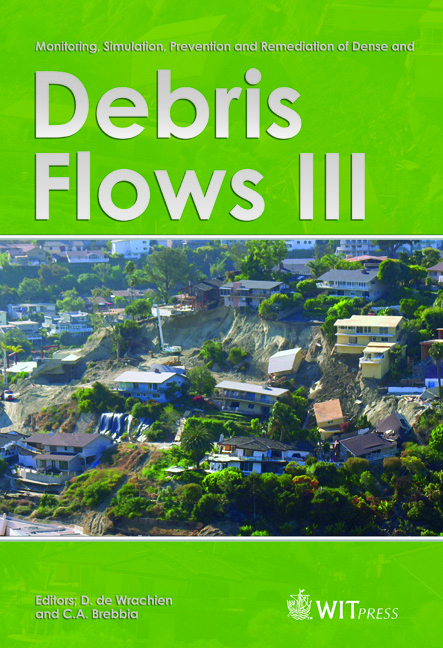Debris Flow Occurrences In Rio Dos Cedros, Southern Brazil: Meteorological And Geomorphic Aspects
Price
Free (open access)
Transaction
Volume
67
Pages
12
Page Range
77 - 88
Published
2010
Size
954 kb
Paper DOI
10.2495/DEB100071
Copyright
WIT Press
Author(s)
M. Kobiyama, R. F. Goerl, G. P. Corrêa & G. P. Michel
Abstract
In Santa Catarina State (Brazil), Rio dos Cedros is one of the cities that suffered from natural disasters triggered by very intense rainfall in November 2008. According to the Municipal Civil Defense, this event caused economic losses of US$2.1 million and 96 homeless, directly affecting 90% of the municipal population. The principal phenomenon responsible for these disasters was the debris flow. In this context, field surveys were conducted throughout the city in order to investigate the possibility for houses to be affected by landslides and debris flows. After the preliminary evaluation, two cases of debris flow whose extensions were over 1 km were chosen for a more detailed survey. The objective of the present study was to analyze the meteorological and geomorphic aspects of these cases. The total rainfall in Rio dos Cedros in November 2008 and the entire year of 2008 were 644 mm and 2509 mm, respectively. An analysis of the daily rainfall during October and November 2008 and the debris flow occurrence time indicates that the factor triggering debris flows in Rio dos Cedros in 2008 was the accumulated rainfall, not its intensity. Two debris flows analyzed in the present study had different geomorphic conditions, one being confined in the channel and showing ordinal debris flow (Debris A), and the other unconfined, presenting the debris avalanche feature (Debris B). The larger density of clastic blocks was observed at the depositional area of Debris B. Both the localities are characterized with migmatite. Topographic analysis showed that the volume of the mass movement is related with topographic parameters (elevation difference and travel distance). This relationship implies that the two cases of Rio dos Cedros had similar behavior to other cases reported in temperate and cold regions. It is, therefore, concluded that there is geomorphic control on
Keywords
debris flow, volume of mass movement, topographic survey, rainfall, woody vegetation, Brazil





